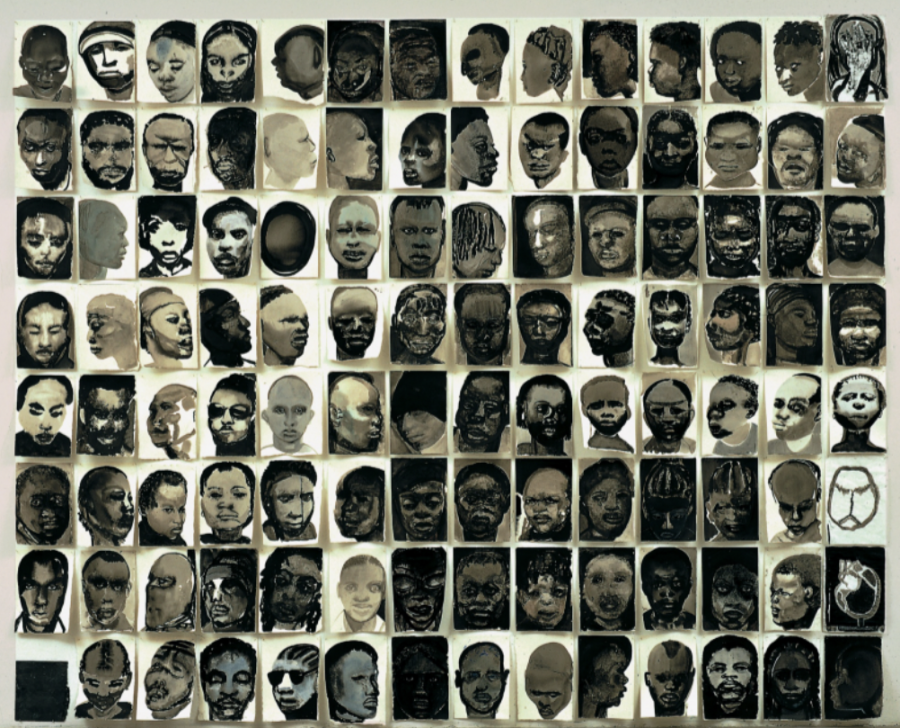
South African Faces Depicted In Art: “Black Drawings”
Apartheid existed in South Africa between 1948 and 1994. The system was developed to create institutionalized racial segregation and discrimination towards the non-white Africans residing there. The Afrikaans word “apartheid” refers to the apartness which depicts the goals of the government. Their objective was to separate all the different racial groups within the communities, with some receiving benefits and others nothing at all. The groups included the categories of white, black, coloured (mixed race), and Indian/Asian. Whites always experienced all the superior rights and privileges while the ‘others’ had to live with demeaning legal and social restrictions. Overall, if someone was non-white they had to face constant systemic oppression and discrimination in South Africa. This is still relevant today because South Africans are suffering the consequences of apartheid.
Introduction
Hidden in a small room in the corner of the Tilburg Museum De Pont, is a wall of Marlene Dumas's artwork of ‘Rejects’. The ink drawing depicts young South African children who are showcasing their faces, who have been rejected by their government and are supposed to recall the dire times of apartheid.
Dumas’s main aim is to portray the theme of race, identity and representation in South Africa. She has first-hand experience of the struggle that was going on during this time of extreme segregation within South Africa because she was born in Cape Town. During her childhood, she witnessed the apartheid system, which is now inspiring her art. Dumas uses her painting to demonstrate her political concerns and how she identifies as a white woman in South Africa.
It is, furthermore, intriguing to experience her “Black Drawing” painting which was purposely placed apart from the larger rooms containing multiple artworks from different artists. The museum visitors are able to walk towards the room that has only two open-door entrances, which give them a small peak of what is inside before completely entering the room. The mood of the room changes once the viewer has entered and is able to view the whole painting. This is because the lighting is dimmed and so is the artwork. There are no graphic colours or light shades incorporated, except for the black pallets being painted on a beige background.

Figure 1. "Black Drawings" by Marlene Dumas in the Tilburg Museum De Pont
The painting (Figure 1) is straightforward since it showcases just faces, but the meaning carries a lot of painful history. The fact that this painting is part of her series ‘Rejects’, seems to highlight the larger issue, which is of course related to race, identity and representation. For a white woman such as Dumas to reflect on a political concern that did not put her in a segregated part, is important, since she is able to use her power to shed light on something that is often times rejected or simply put, ignored.
The main aim of this opinion article is to highlight Dumas's meaning behind the painting “Black Drawing”. It develops on the idea that the race and identity of certain groups are not represented enough, which is Dumas's main goal to showcase those who have been forgotten. She comes from a privileged background, but she has been able to tell her narrative of apartheid that she witnessed first-hand through her paintings.
Background Information
It is vital to reflect on the Apartheid in South Africa in order to understand Dumas’s objective of the painting. The article “Race in South Africa: “We haven’t learnt we are human beings first” by the BBC revisits the chief problems of Apartheid and how they still influence the present (BBC News, 2021). According to the BBC, the South African government has improved in terms of political equality and the dismantling of discriminatory laws (BBC News, 2021). However, within the communities, there is still persistent deep-seated racial discrimination (BBC News, 2021). It is therefore important that artists such as Dumas exist. She is white and has not experienced being discriminated against, however, she uses her platform to advocate for those who have been. This is especially vital since she does it in a manner of depicts the black faces of those who have been rejected, instead of portraying herself in public.
Analysis & Discussion
The art piece “Black Drawing” is created through a minimalist black palette, which focuses on the essence of the figure’s face by accentuating its emotional depth. Overall, Dumas's objectives are to demonstrate her political concerns regarding apartheid in South Africa. In this illustration, she is exploring the complexities and nuances of blackness as a social construct, by challenging the traditional notions of beauty. With each picture Dumas is forcing the viewer to experience the subject's rawness of what black is. She is trying to showcase the people that are usually ignored in public because during apartheid the privileged looked away and segregated the non-whites from public spaces. The drawing is therefore confronting the ideas that impact race and the different layers of meaning it carries by featuring complex emotions in a simple but powerful manner.
Conclusion
In conclusion, the painting “Black Drawing” by Dumas delves into the complex dynamics of black existence in South Africa. She is able to depict her political concerns regarding race and identity by representing those who have been rejected. This is because she uses the first-hand experience that she had witnessed during apartheid. She was able to see how dehumanized non-white people were in a country that was originally theirs. Instead of segregating their presence, Dumas chooses to represent those who have been discriminated against for a long time. It is thus captivating to look at her painting and to see different people.
Reference
BBC News. (2021, January 21). Race in South Africa: “We haven’t learnt we are human beings first.” BBC. https://www.bbc.com/news/world-africa-55333625